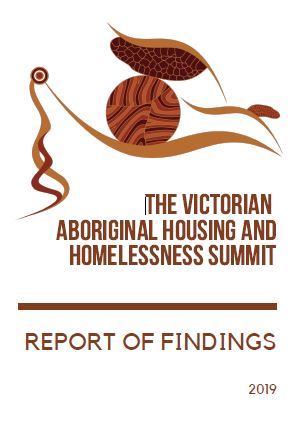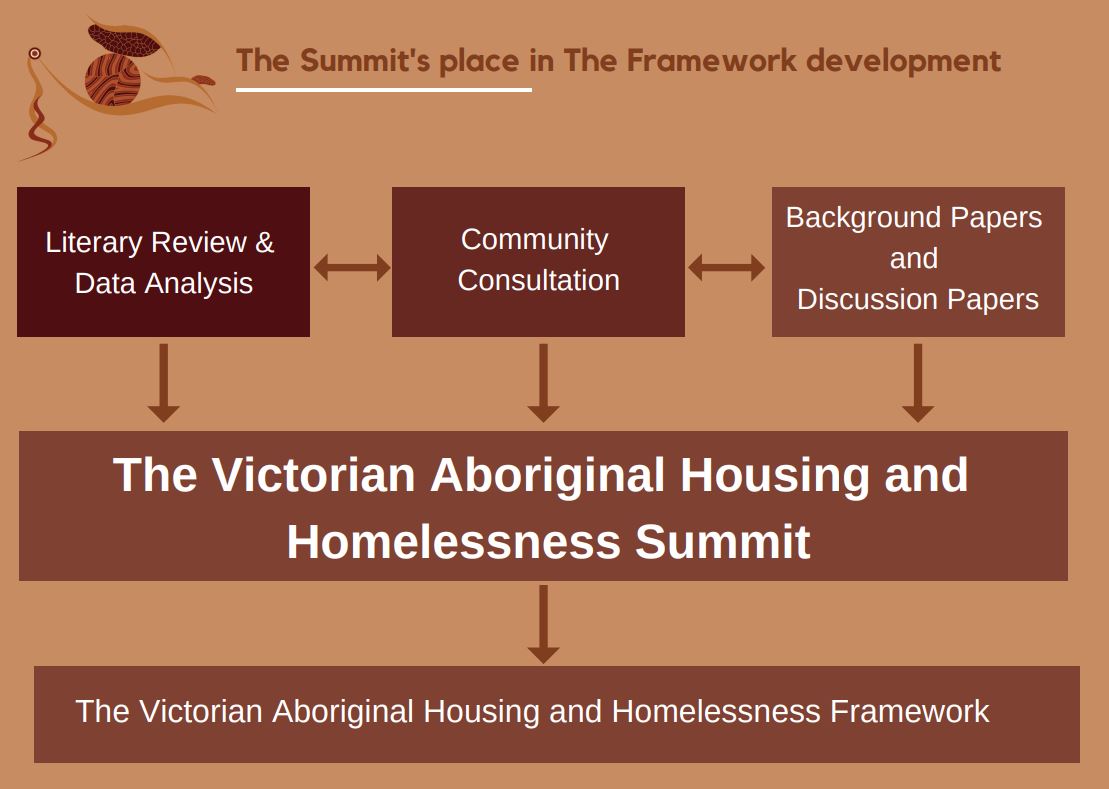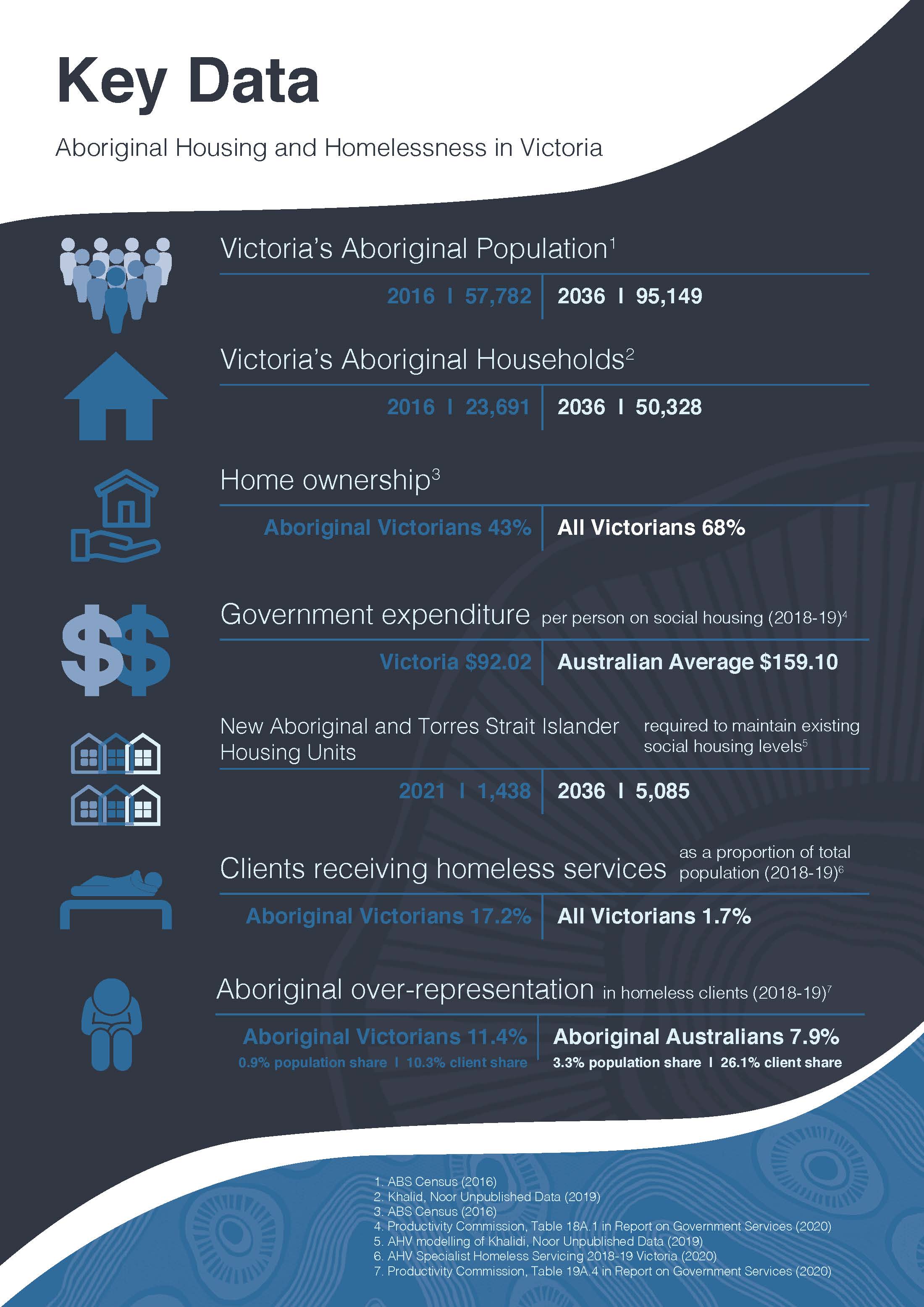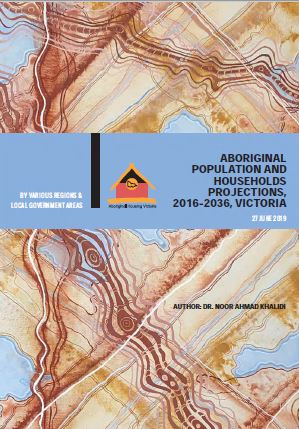Victorian Aboriginal Housing and Homelessness Framework
Please visit www.vahhf.org.au to download the complete and overview documents.
Aboriginal communities, organisations and stakeholders have for many years been calling for stronger responses to the relatively poor housing outcomes that Aboriginal Victorians experience.
The community recognises that without safe and secure housing, investments in areas such as health, education, economic development, justice and family violence are unlikely to be effective.
The Victorian Government has funded Aboriginal Housing Victoria (AHV) to support work on the development of an overarching Aboriginal Housing and Homelessness Framework. The Framework amongst other things seeks to improve housing outcomes for all Aboriginal Victorians across their life course, assist in building the capacity of Aboriginal organisations to own, manage and grow rental stock, and identify innovative models that secure housing for Aboriginal Victorians, including pathways to private ownership.
The Framework will be built on the strengths of the community and take a ‘rights-based’ self-determination approach that places Aboriginal Victorians and their communities firmly at the centre of housing policy initiatives.
The Victorian Aboriginal Housing and Homelessness Launch
The Victorian Aboriginal Housing and Homelessness Framework has been developed and was officially presented on 26th February 2020 at the Victorian Parliament House. The strategy titled Mana-na worn-tyeen maar-takoort: Every Aboriginal Person Has a Home can be accessed online at www.vahhf.org.au.
It also features artwork from Tarryn Love, a proud Gunditjimara Keeray Woorrong woman from Western Victoria.
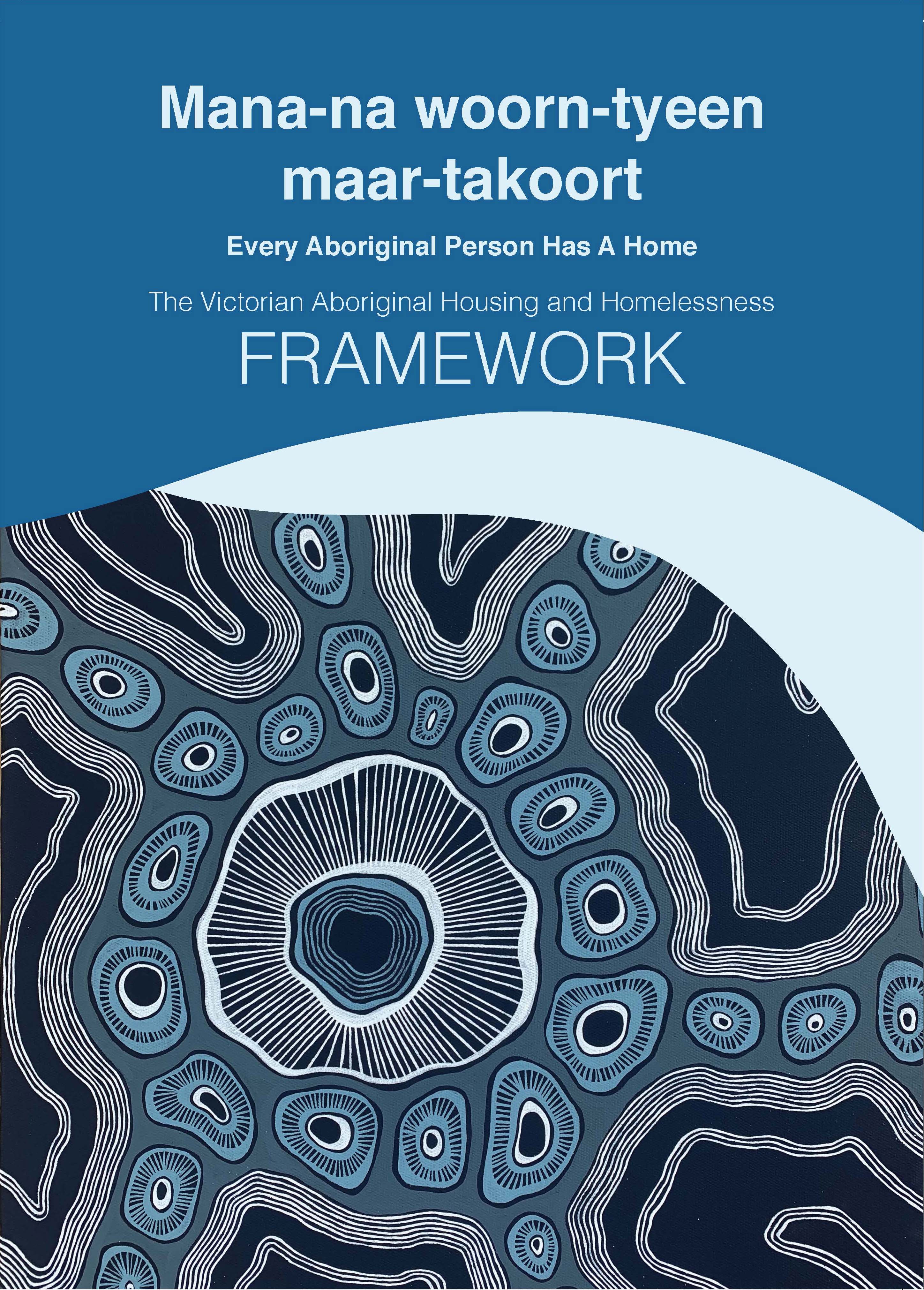 The central theme of this artwork expresses the idea of various different Indigenous Nations coming together to a central meeting place to co-exist and co-operate with unity, therefore creating a strong diverse community. The large circular shape in the centre recognises all the Indigenous voices contributing to this community and represents the sovereignty and self-determination of each of those individuals.
The central theme of this artwork expresses the idea of various different Indigenous Nations coming together to a central meeting place to co-exist and co-operate with unity, therefore creating a strong diverse community. The large circular shape in the centre recognises all the Indigenous voices contributing to this community and represents the sovereignty and self-determination of each of those individuals.
The design that dominates the movement of the artwork, characterises the waterways that act as bloodlines across country. Rivers are so vital in connecting Nations and the symbols inside the river emphasize the large amount of different Nations that exist across Australia.
The contouring lines in the artwork are a direct link to country and its physical landscape. This symbolism signifies Indigenous people’s strong relationship not only physically but spiritually to the land. Overall this artwork is a reminder of the importance and strength that Indigenous people source from place, while also coming together to support this connection.
Tarryn has a strong passion for culture which is heavily inspired by her family who teach her traditional stories and practices. Through her art she not only continually explores her knowledge but also revives and reinvigorates.
The Framework title Mana-na woorn-tyeen maar-takoort, translates to ‘Every Aboriginal Person Has A Home’ in the Gunditjmara dialects.
The Victorian Aboriginal Housing and Homelessness Summit
The Housing Summit held on 5 April 2019 was a very successful event with a high level of participant positivity.
The day started with a presentation by Jack Charles, followed by a community panel that included Aunty Pat Ockwell, Aunty Di Kerr, Aunty Shirley Firebrace and Sharyn Lovett. The panel discussed their personal housing and homelessness experiences and the current obstacles that Aboriginal Victorians continue to face. This set the scene for the day.
The day continued with thirteen workshops over two sessions. The morning session focused on the “building blocks” of the Aboriginal housing sector, while the afternoon session focused on “life events” that impact on the housing experiences of many Aboriginal Victorians. You can view the background and discussion papers from The Summit below.
Over 130 participants, including Aboriginal community members, stakeholders and government representatives all made a significant and positive contribution to discussions on the various topics. This information will be consolidated into a report that will be integral to inform the development of the VAHHF, which will be available soon.
The Summit attracted media interest, including a substantial segment on the SBS news service on the evening of 5 April 2019. https://www.sbs.com.au/news/leaders-call-for-action-to-tackle-victoria-s-rising-indigenous-homeless-numbers
Regular updates will be provided via this page. Please call Meagan on (03) 9403 2159 if you wish to speak to us about the Framework.
Links:
- Proposal to develop a Victorian Aboriginal Housing and Homelessness Framework
- Parity - Vol 31, No 5 - An Aboriginal Housing and Homelessness Framework for Victoria
- Victorian Aboriginal Housing and Homelessness Framework Literature Review
The Summit Documents
The Summit Background and Discussion Papers
The Summit Program
Index of Papers
Background Paper 1
Background Paper 2
Background Paper 3
Discussion Paper 1 - A Vision
Discussion Paper 2 - Capacity
Discussion Paper 3 - Private Ownership and Rental
Discussion Paper 4 - Building Supply
Discussion Paper 5 - Housing as a base for improved outcomes
Discussion Paper 6 - Homelessness
Discussion Paper 7 - Education and Training
Discussion Paper 8 - Elders
Discussion Paper 9 - Justice
Discussion Paper 10 - Family Violence
Discussion Paper 11 - Leaving Care
Discussion Paper 12 - Homelessness
Discussion Paper 13 - Disability
Aboriginal Population and Households Projections, 2016-2036, Victoria
The following publication, Aboriginal Population and Households Projections, 2016-2036, Victoria - By Various Regions and Local Government Areas, was authored by Dr. Noor Ahmad Khalidi and was published by Aboriginal Housing Victoria.
The population and household projections, as well as local area needs analysis, are crucial research projects that inform future Aboriginal housing planning in Victoria. The results of the population and household projections will assist Aboriginal Housing Victoria to undertake future planning processes using evidence-based hard data on future Aboriginal population and household trends. This project will inform housing needs analysis and Aboriginal housing planning at regional levels and Local Government Area (LGA) levels.
AHV commissioned Dr. Noor Ahmad Khalidi to undertake these projections. Dr Khalidi is a demographer and has over 26 years of work experience in Indigenous affairs in Australia including as a Senior Advisor to the Office of Indigenous Policy, the Department of the Prime Minister and Cabinet. Previously, he has completed similar projects, among others, for the NSW Aboriginal Housing Office, NSW Aboriginal Land Council, NSW Department of Aboriginal Affairs and Qld Department of Community Services.
This report has been provided so that many other agencies and community organisation make use of the information contained in the report.
| Download the Households Projections Report here |
Contact
In addition to being the largest Aboriginal Registered Housing Agency in Australia, Aboriginal Housing Victoria is the lead agency for Victoria's Aboriginal housing and homelessness policy, Mana-na worn-tyeen maar-takoort.
Visit the AHV website here. https://ahvic.org.au/
Read about the development of the Framework on the AHV website here.

